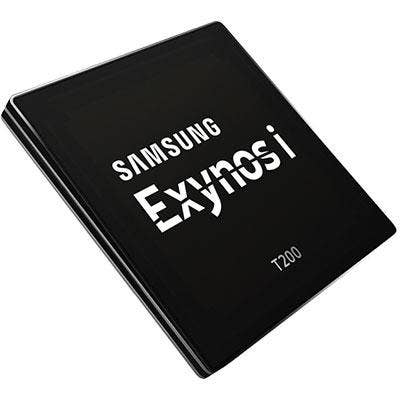Samsung Dethrones Intel From Top Spot In Global Semiconductor Market

Samsung has toppled Intel as the dominant company in chip manufacturing in 2017, according to the companies' newly released financial reports.
The change – which marks the first time since 1992 that Intel is not in the top spot – stems in part from the fact that memory prices were higher due to a supply shortage.
"The largest memory supplier, Samsung Electronics, gained the most market share and took the [No. 1] position from Intel," said Andrew Norwood, research vice president at market research firm Gartner, in a statement.
[Released: 10 Hot Startups That Raised VC Funding In January]
"Memory accounted for more than two-thirds of all semiconductor revenue growth in 2017 and became the largest semiconductor category," he said in the statement.
Samsung's semiconductor division generated $69.1 billion in annual revenue in 2017, topping the $62.8 billion in annual revenue generated by Intel, according to the companies' respective financial reports.
According to Gartner, NAND flash prices increased year over year for the first time, up 17 percent, while DRAM prices rose 44 percent.
Equipment companies could not absorb these price increases and passed them onto consumers, making everything from PCs to smartphones more expensive in the past year, according to the Gartner report.
"In terms of Intel slipping to No. 2 on the semiconductor list, that is more of a factor of memory pricing and the impact on revenue," said Kent Tibbils, vice president of marketing at Fremont, Calif.-based ASI. "In terms of business focus, the channel benefits the most from Intel’s leadership in key markets such as HPC, data center, SSD, networking, desktop, mobile and more. In this regard, Intel is better positioned to support long-term growth opportunities for the channel and, of course, for Intel."
Solution providers have seen memory prices fluctuate in the past, but the most recent situation has been different as prices have not come down for almost a year, according to Tibbils.
"With factory capacity being diverted to produce NAND to supply the growth in SSD, with increases in demand for memory in compute devices across the board and with the cryptocurrency markets driving up demand for graphics cards, memory supply of all types has remained tight, resulting in price increases or at the very least holding off price decreases," he said. "Growth in semiconductor memory combined with higher prices resulting from short supply across all categories would be very good for manufacturers whose main line of business is memory. "
Despite Samsung's lead over Intel, Gartner said that the lead is "literally built on sand, in the form of memory silicon."
"Memory pricing will weaken in 2018, initially for NAND flash and then DRAM in 2019 as China increases its memory production capacity," said Norwood in the statement. "We then expect Samsung to lose a lot of the revenue gains it has made."